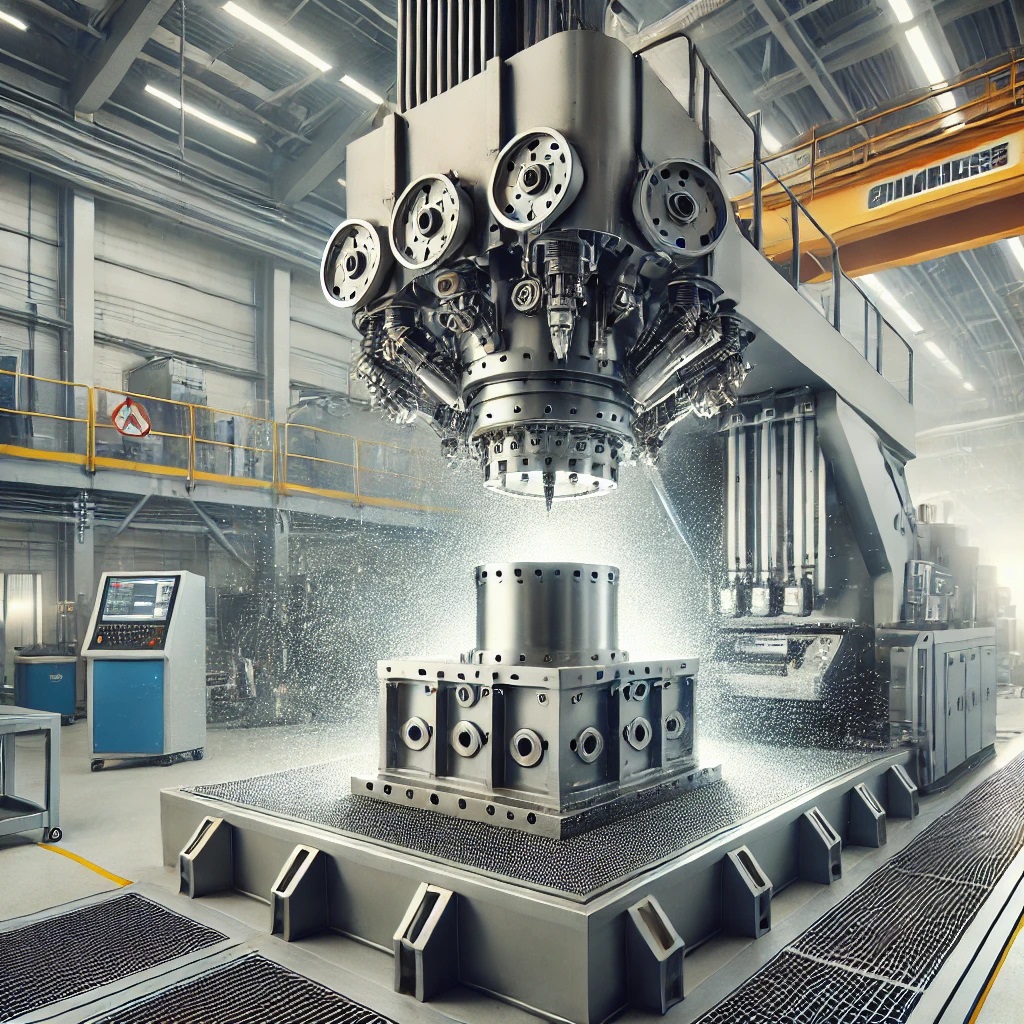
Shot peening is a vital process in the manufacturing industry, primarily used to enhance the fatigue life of metal components. As industries continue to evolve, so does the technology behind shot peening machines. Recent innovations have brought significant improvements to the shot peening process machine design, making the process more efficient, precise, and versatile. This article explores the latest advancements in shot peening machine design and how these innovations are revolutionizing the industry.
1. Automated Shot Peening Systems ✨
One of the most significant advancements in shot peening machine design is the development of fully automated systems. These machines are equipped with advanced robotics and computer controls, allowing for precise and consistent shot peening across complex geometries. Automation minimizes human error, reduces cycle times, and ensures uniformity in the peening process, leading to higher quality outcomes.
Benefits:
- Increased Precision: Automated systems can control peening intensity and coverage with high accuracy.
- Consistency: Automation eliminates variability, ensuring consistent results across batches.
- Efficiency: Reduced cycle times and minimal manual intervention lead to cost savings.
2. Real-Time Monitoring and Feedback Systems 📊
Modern shot peening machines now feature real-time monitoring and feedback systems. These innovations enable operators to monitor the process in real time, ensuring that all parameters such as intensity, coverage, and shot velocity are within specified ranges. Any deviations can be immediately corrected, improving the reliability and quality of the shot peening process.
Benefits:
- Improved Quality Control: Real-time data allows for immediate adjustments, reducing the risk of defects.
- Data Collection: Continuous monitoring generates valuable data for process optimization and quality assurance.
- Enhanced Safety: Early detection of issues prevents equipment failure and ensures operator safety.
3. Advanced Materials and Media Handling 🎯
The use of advanced materials in the construction of shot peening machines has improved their durability and performance. Innovations in media handling systems, such as magnetic separators and automated media replenishment, ensure that the shot media remains clean and consistent throughout the process. This leads to more effective peening and longer machine life.
Benefits:
- Longevity: Advanced materials extend the life of the machine components.
- Consistency: Enhanced media handling ensures uniform shot size and distribution, crucial for achieving desired surface properties.
- Maintenance: Reduced wear and tear on the machine components lead to lower maintenance costs and downtime.
4. Customization and Flexibility 🎨
Innovations in shot peening machine design now offer greater customization and flexibility, allowing manufacturers to tailor the machines to specific applications. Machines can be configured to handle various component sizes, shapes, and materials, making them more versatile and adaptable to different industrial needs.
Benefits:
- Versatility: Customizable machines can be adapted to different processes, making them suitable for various industries.
- Scalability: Machines can be scaled up or down based on production needs, offering greater flexibility.
- Cost-Effectiveness: Customization reduces the need for multiple machines, lowering overall investment costs.
5. Integration with Industry 4.0 🌐
The integration of shot peening machines with Industry 4.0 technologies is another exciting innovation. By connecting machines to the Industrial Internet of Things (IIoT), manufacturers can achieve higher levels of automation, data analysis, and predictive maintenance. This connectivity enables seamless integration into smart factories, optimizing the entire production process.
Benefits:
- Predictive Maintenance: IIoT integration allows for the prediction of maintenance needs, reducing unexpected downtime.
- Data-Driven Decisions: Continuous data collection and analysis enhance process optimization and decision-making.
- Enhanced Efficiency: Integration with other smart factory systems streamlines operations and improves overall efficiency.
Key Takeaways 💡
- Automation: Automated systems enhance precision, consistency, and efficiency in shot peening.
- Monitoring: Real-time monitoring improves quality control and safety.
- Materials: Advanced materials and media handling extend machine life and reliability.
- Customization: Flexibility and customization make machines adaptable to various industrial needs.
- Industry 4.0: Integration with smart technologies enhances efficiency and predictive maintenance.
FAQs About Shot Peening Machine Innovations ❓
Q1: What is the primary advantage of automated shot peening machines?
- A1: Automated shot peening machines offer increased precision, consistency, and efficiency, significantly reducing human error and ensuring uniformity in the peening process.
Q2: How do real-time monitoring systems benefit the shot peening process?
- A2: Real-time monitoring systems allow for immediate adjustments, ensuring that all process parameters remain within specified ranges, which improves overall quality and reduces the risk of defects.
Q3: Why is customization important in shot peening machine design?
- A3: Customization allows machines to be tailored to specific applications, making them more versatile and cost-effective by reducing the need for multiple machines.
Q4: How does the integration of Industry 4.0 technologies impact shot peening machines?
- A4: Integration with Industry 4.0 technologies enhances predictive maintenance, data-driven decision-making, and overall process efficiency, contributing to the optimization of smart factory operations.
Q5: What advancements have been made in media handling systems?
- A5: Innovations such as magnetic separators and automated media replenishment systems ensure that shot media remains clean and consistent, leading to more effective peening and reduced machine wear.
These innovations in shot peening machine design are transforming the industry, leading to more efficient, precise, and reliable manufacturing processes. By embracing these advancements, manufacturers can enhance the quality and durability of their products, ultimately achieving greater customer satisfaction and competitive advantage.
